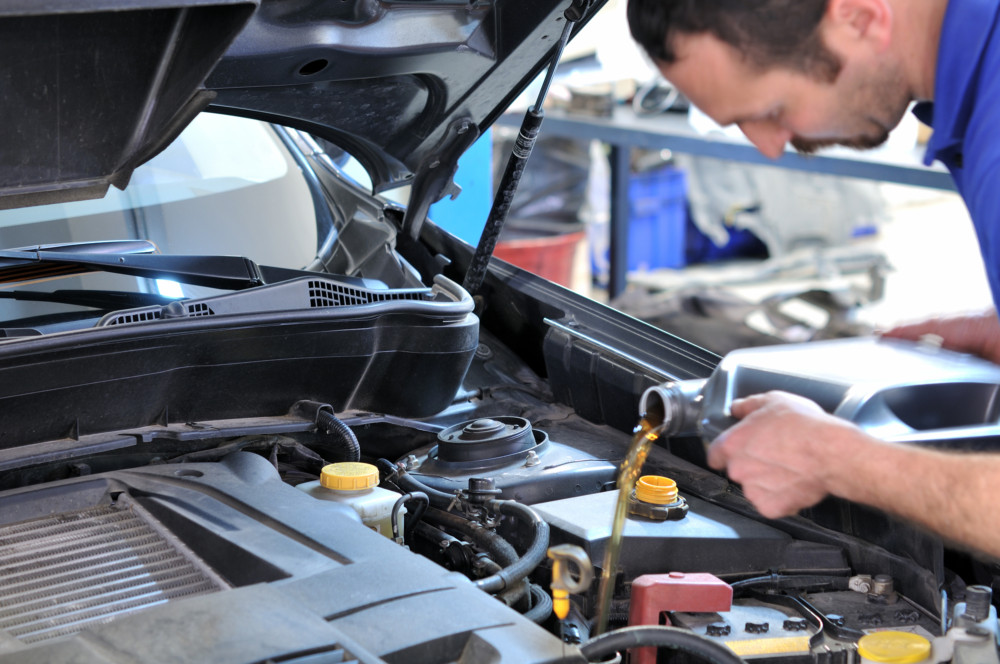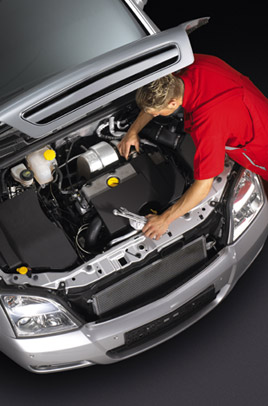Engine diagnostics play an essential role in making sure vehicles run smoothly and effectively. Vehicle fixing shops make use of sophisticated tools and strategies to recognize prospective concerns prior to they intensify right into expensive repair work. Recognizing how these diagnostics job can assist car owners appreciate the value of normal maintenance and fast response to caution signs.
The Duty of Modern Innovation in Engine Diagnostics. When mechanics depend entirely on their experience and an eager ear to detect engine troubles, gone are the days. Today, vehicle repair work stores use sophisticated diagnostic devices connected to a vehicle's onboard computer system. A lot of modern-day cars are geared up with an Onboard Diagnostics (OBD) system, which keeps an eye on the efficiency of different parts, consisting of the engine, transmission, and discharges system.
![]()
Using an OBD scanner, professionals access problem codes that show possible problems. As an example, if the "check engine" light illuminates, the OBD system tape-records a mistake code. Technicians obtain this code to identify the affected area, such as a misfiring cyndrical tube, malfunctioning oxygen sensor, or catalytic converter problem. These codes save time and increase diagnostic precision by limiting the problem.
Step-by-Step Engine Diagnostic Refine. Preliminary Evaluation:. Professionals begin by visually evaluating the engine for evident indicators of wear or damage, such as leaking fluids, harmed belts, or loosened parts. This step helps eliminate small concerns that don't require thorough diagnostics.
Linking the Diagnostic Tool:. The mechanic connects the OBD scanner into the diagnostic port, usually situated under the dashboard. This tool communicates with the lorry's computer system to recover fault codes and performance information.
Interpreting the Codes:. When the problem codes are displayed, specialists cross-reference them with a database to determine the feasible reasons of the problem. This action is vital as some codes might have several analyses, requiring additional screening.
![]()
Doing Advanced Examinations:. If the mistake code indicates a particular problem, such as reduced fuel pressure, specialists might make use of extra tools like pressure evaluates or multimeters to validate the problem. For intricate concerns, they might conduct online data tracking, observing just how the engine performs in real time.
Examining Signs And Symptoms and Handling Issues:. Technicians incorporate the information from diagnostic tools with their experience to identify the origin of the trouble. After determining the issue, they suggest appropriate repair services or replacements, whether it's a defective sensor, blocked filter, or ignition system issue.
Advantages of Engine Diagnostics. Precision: Advanced tools eliminate uncertainty, ensuring exact and quick issue recognition. Preventive Upkeep: Diagnostics find small issues early, avoiding costly repair work and failures. Efficiency: The structured procedure reduces repair service times, getting drivers back on the roadway faster. Environmental Compliance: Identifying and repairing emission-related troubles assist fulfill regulatory requirements and decrease ecological influence. Conclusion. Engine diagnostics are a keystone of modern-day car repair services. By combining innovative modern technology with knowledgeable competence, repair work shops supply precise, effective services that maintain automobiles in peak condition. Routine analysis checks can conserve time, money, and the stress of unexpected break downs, making them a wise financial investment for any car proprietor.
The Duty of Modern Innovation in Engine Diagnostics. When mechanics depend entirely on their experience and an eager ear to detect engine troubles, gone are the days. Today, vehicle repair work stores use sophisticated diagnostic devices connected to a vehicle's onboard computer system. A lot of modern-day cars are geared up with an Onboard Diagnostics (OBD) system, which keeps an eye on the efficiency of different parts, consisting of the engine, transmission, and discharges system.

Using an OBD scanner, professionals access problem codes that show possible problems. As an example, if the "check engine" light illuminates, the OBD system tape-records a mistake code. Technicians obtain this code to identify the affected area, such as a misfiring cyndrical tube, malfunctioning oxygen sensor, or catalytic converter problem. These codes save time and increase diagnostic precision by limiting the problem.
Step-by-Step Engine Diagnostic Refine. Preliminary Evaluation:. Professionals begin by visually evaluating the engine for evident indicators of wear or damage, such as leaking fluids, harmed belts, or loosened parts. This step helps eliminate small concerns that don't require thorough diagnostics.
Linking the Diagnostic Tool:. The mechanic connects the OBD scanner into the diagnostic port, usually situated under the dashboard. This tool communicates with the lorry's computer system to recover fault codes and performance information.
Interpreting the Codes:. When the problem codes are displayed, specialists cross-reference them with a database to determine the feasible reasons of the problem. This action is vital as some codes might have several analyses, requiring additional screening.

Doing Advanced Examinations:. If the mistake code indicates a particular problem, such as reduced fuel pressure, specialists might make use of extra tools like pressure evaluates or multimeters to validate the problem. For intricate concerns, they might conduct online data tracking, observing just how the engine performs in real time.
Examining Signs And Symptoms and Handling Issues:. Technicians incorporate the information from diagnostic tools with their experience to identify the origin of the trouble. After determining the issue, they suggest appropriate repair services or replacements, whether it's a defective sensor, blocked filter, or ignition system issue.
Advantages of Engine Diagnostics. Precision: Advanced tools eliminate uncertainty, ensuring exact and quick issue recognition. Preventive Upkeep: Diagnostics find small issues early, avoiding costly repair work and failures. Efficiency: The structured procedure reduces repair service times, getting drivers back on the roadway faster. Environmental Compliance: Identifying and repairing emission-related troubles assist fulfill regulatory requirements and decrease ecological influence. Conclusion. Engine diagnostics are a keystone of modern-day car repair services. By combining innovative modern technology with knowledgeable competence, repair work shops supply precise, effective services that maintain automobiles in peak condition. Routine analysis checks can conserve time, money, and the stress of unexpected break downs, making them a wise financial investment for any car proprietor.
Navigation
Home
Latest Posts
Experience High-end Redefined: The All-New Mazda CX-90
Published May 25, 25
2 min read
The New Mazda CX-70: Where Deluxe Satisfies Performance
Published May 25, 25
2 min read
The New Mazda CX-70: Where Luxury Satisfies Efficiency
Published May 22, 25
2 min read